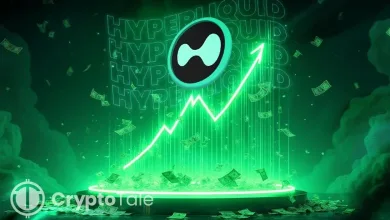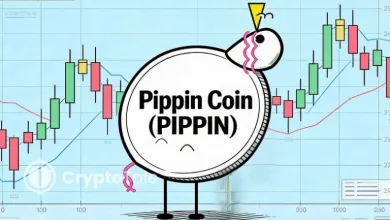The Blockchain Bulletin April 25: Russia’s State-Backed Crypto Exchange Proposal

Hey folks! Welcome to the latest edition of our Blockchain Bulletin news edition, where we unravel insights that hit the headlines in the past 24 hours. In an essential move aimed at shaping the future of digital finance, Russia has proposed a state-backed cryptocurrency exchange for its elite investors. This initiative, led by the Ministry of Finance and the Central Bank, will regulate digital assets under the Experimental Legal Regime (ELR). The ELR framework allows the testing of financial innovations in a controlled environment for up to three years, offering a unique opportunity for high-net-worth individuals to access legal crypto trading.
To be eligible, investors must have at least ₽100 million ($1.2 million) in assets or an annual income exceeding ₽50 million ($600,000). While these criteria might be adjusted, the exchange will be exclusive to Russia’s wealthiest, and it will not support domestic payments or transactions outside the ELR. This step demonstrates Russia’s calculated approach to crypto regulation, balancing financial control with innovation.
Inflation is giving Bitcoin both a reason to exist and a challenge in the face of a stronger, older object of speculation, gold. John D’Agostino of Coinbase stated that institutions and sovereign wealth funds have been “small accumulators” of Bitcoin, viewing it as a “macro insurance asset.” Conversely, retail investors have been net sellers of crypto through ETFs. Increased institutional adoption represents a shift in the story of Bitcoin, as many players now view it as a relatively safe store of value due to economic uncertainties caused by a weakening dollar and declining global trade.
Nonetheless, the crypto market faces severe threats, especially involving scams. Reports from the FBI indicate that in 2024, almost $9.3 billion was lost in crypto fraud. The soaring trend of cybercrime bears witness to the increasing sophistication of fraudsters who target digital asset users. The rapid escalation of the crypto market has resulted in regulators and industry leaders coming under increasing pressure to put in place stronger consumer protections. The question remains: how will the industry respond to these evolving threats and safeguard market integrity?
ZKsync was able to recover $5.7 million of stolen tokens. All thanks to the bounty paid to the hacker. It happened during the token airdrop in April, during which the hacker exploited a vulnerability and minted 111 million unclaimed ZK tokens. After a 72-hour safe harbor offer, the hacker returned about 90% of the stolen assets and gets to keep a reward of 10%. It is more than evident that this incident calls for more stringent protection measures for digital assets and hints at some ingenious thinking in recovering stolen funds.
In the legal arena, Mango Markets has sought $47 million in reparations from Avraham “Avi” Eisenberg, the individual responsible for the $110 million exploit on the decentralized exchange. Eisenberg was convicted in April 2024 of wire fraud, commodities fraud, and market manipulation. He is set for sentencing on May 1, 2025. The case serves as a stark reminder of the need for stronger security and accountability in the decentralized finance (DeFi) sector.
Related: DeXe Price Prediction 2025-35: Will It Hit $250 by 2035?
Market data from April 24, 2025, reveals a slight downturn across the cryptocurrency landscape. According to CryptoRank, the total market capitalization fell by 0.95% to $3.03 trillion, and 24-hour trading volume decreased by 6.10%, reaching $65.68 billion. Despite these declines, key cryptocurrencies like Bitcoin and Ethereum held their support levels. Bitcoin (BTC) was priced at $92,819, down 0.76%, and Ethereum (ETH) stood at $1,773 after a 1.69% drop. Solana (SOL) also saw a dip of 1.71%, and XRP dropped 2.37%, reaching $2.19.
Fluctuations of this nature definitely prove the dynamic nature of the cryptocurrency market. While regulations and institutions make progress in defining how the world pulls the sector forward, obstacles like fraud and security breaches continue to test the mettle of digital assets.




